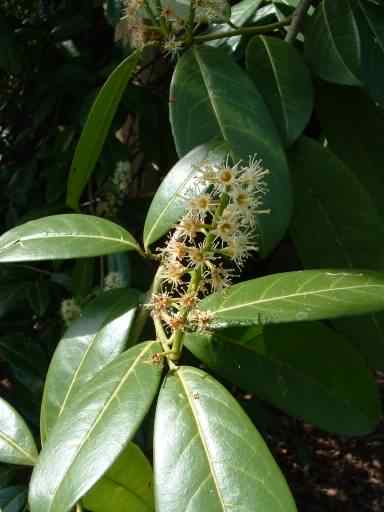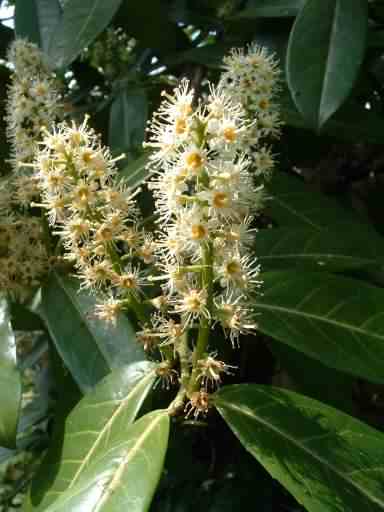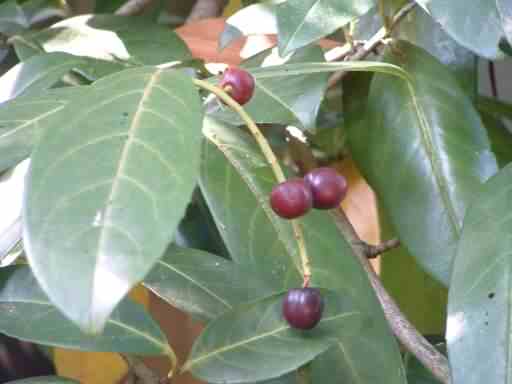


Click any photo for a larger image

Cherry Laurel - Prunus laurocerasus
Family - Rosaceae
Also known as - English Laurel, Cherry–Bay, Laurier–armande
This plant is poisonous
An evergreen tree or bush native to most of Europe growing to 5–10m (16–32ft) and trunk to 50cm (1.6ft) in diameter. Dark green shiny alternate obovate or nearly lanceolate leaves with a leathery appearance, 10–25cm (4–10in) long and 4–8cm (2–3.5in) wide, with a slightly serrulate margin, they are a paler green on the underside. Fragrant white 5–petaled flowers appear around April in erect open racemes of small white flowers with an orange centre, ripening to a small inedible cherry like fruit turning black as they mature. Widely planted as an ornamental plant almost worldwide, it has become naturalised in temperate latitudes. It is a native of South East Europe, apparently being introduced into Britain in 1570s. It is often confused with the true Laurel, Laurus nobilis, however they are not related.
BCP do not advise or recommend that Cherry Laurel – Prunus laurocerasus is eaten or used as an herbal remedy. All parts of the plant contain hydrogen cyanide, but found mainly in the leaves and seed. Hydrogen Cyanide is a toxin that gives almonds their characteristic flavour, it has been shown to stimulate respiration and improve digestion and is also claimed to be of benefit in the treatment of cancer, however it can cause respiratory failure and even death if taken in large amounts.
 |
 |
 |
| Photos ©2006– Click any photo for a larger image |
Site design ©1999– Brickfields Country Park - Privacy -